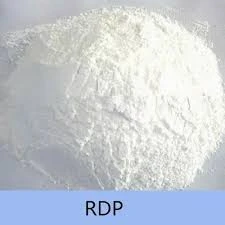
Dec . 20, 2024 17:53 Back to list
hydroxy methyl cellulose
Hydroxy Methyl Cellulose An Overview
Hydroxy Methyl Cellulose (HMC), a non-ionic, water-soluble cellulose ether, plays a crucial role in various industries due to its unique properties. This versatile compound is derived from cellulose, a natural polymer that forms the structural component of plant cell walls. HMC is produced by the chemical modification of cellulose through the introduction of hydroxy methyl groups. This modification enhances the solubility of cellulose in water and broadens its applicability in various formulations and products.
Properties of Hydroxy Methyl Cellulose
HMC possesses several key properties that make it an essential ingredient across multiple sectors. It is known for its excellent thickening, film-forming, emulsifying, and stabilizing characteristics. HMC can dissolve in cold water, forming a clear and viscous solution, which is particularly beneficial in formulations requiring consistency and texture. Its ability to retain water also contributes to its effectiveness as a binder, improving the performance of products such as adhesives and coatings.
Additionally, HMC is chemically stable and resistant to degradation. It exhibits non-ionic behavior, which means it does not ionize in solution, making it compatible with a wide range of other ingredients. This compatibility is especially advantageous in pharmaceutical formulations and cosmetic products where a stable and uniform mixture is essential.
Applications of Hydroxy Methyl Cellulose
Given its advantageous properties, HMC has found widespread applications in various industries
1. Pharmaceuticals HMC is commonly used as a binder and thickening agent in the formulation of tablets and capsules. Its film-forming properties enhance the release profiles of active pharmaceutical ingredients (APIs), ensuring consistent dosage delivery. Furthermore, it is utilized in ophthalmic solutions due to its ability to maintain moisture and provide lubrication.
hydroxy methyl cellulose

2. Food Industry In the food sector, HMC serves as a thickening agent, stabilizer, and emulsifier. It helps improve the texture of various food products, such as sauces, dressings, and ice creams. Its capacity to retain moisture is particularly beneficial in preventing dry textures and enhancing mouthfeel.
3. Cosmetics and Personal Care The cosmetic industry takes advantage of HMC's thickening and film-forming properties in creams, lotions, and gels. It is often used in formulations for skincare products, as it helps to improve viscosity while ensuring that the product retains moisture and functions effectively during application.
4. Construction In the construction sector, HMC is used as an additive in mortar and plaster to enhance workability and improve adhesion. Its presence helps to retain water, which is critical for curing processes, and it contributes to the overall strength and durability of construction materials.
5. Agriculture HMC is also employed in agriculture, particularly in controlled-release fertilizers and pesticide formulations. It aids in creating a slow-release mechanism that enhances nutrient uptake by plants while minimizing environmental impact.
Environmental Impact and Safety
As a derivative of natural cellulose, HMC is biodegradable and environmentally friendly. Its production relies on renewable resources, positioning it as a sustainable alternative to synthetic substances. Furthermore, HMC is generally recognized as safe (GRAS) by various regulatory agencies, making it suitable for food and pharmaceutical applications. However, as with any chemical compound, it is essential to use HMC in accordance with guidelines to ensure safety and effectiveness.
Conclusion
Hydroxy Methyl Cellulose is a remarkable compound characterized by its versatile properties and wide range of applications. From pharmaceuticals and food products to cosmetics and construction materials, HMC continues to play a vital role in enhancing product performance and user experience. Its environmentally friendly nature, along with its safety profile, further solidifies its position as a valuable ingredient in various industries. As research and development in cellulose derivatives progress, the future of Hydroxy Methyl Cellulose looks promising, potentially leading to even more innovative applications and uses in the years to come.
-
Versatile Hpmc Uses in Different Industries
NewsJun.19,2025
-
Redispersible Powder's Role in Enhancing Durability of Construction Products
NewsJun.19,2025
-
Hydroxyethyl Cellulose Applications Driving Green Industrial Processes
NewsJun.19,2025
-
Exploring Different Redispersible Polymer Powder
NewsJun.19,2025
-
Choosing the Right Mortar Bonding Agent
NewsJun.19,2025
-
Applications and Significance of China Hpmc in Modern Industries
NewsJun.19,2025







